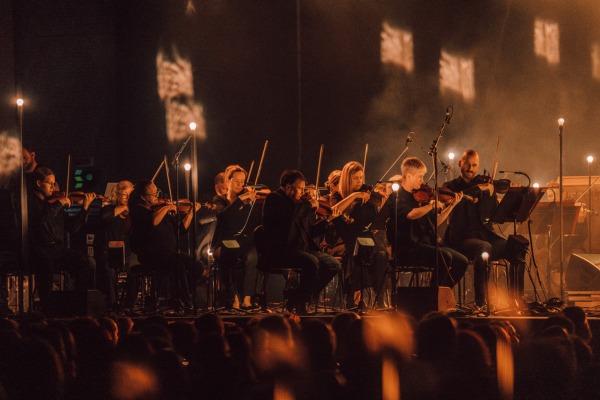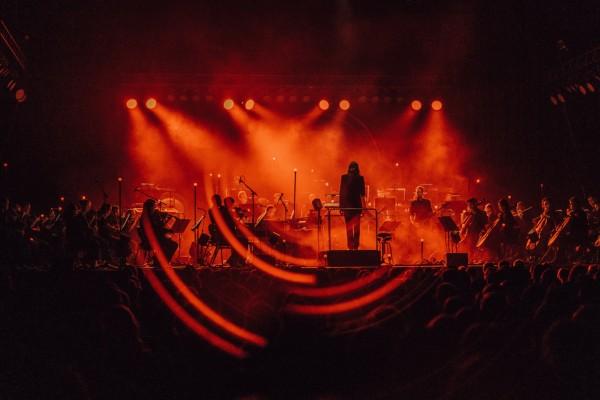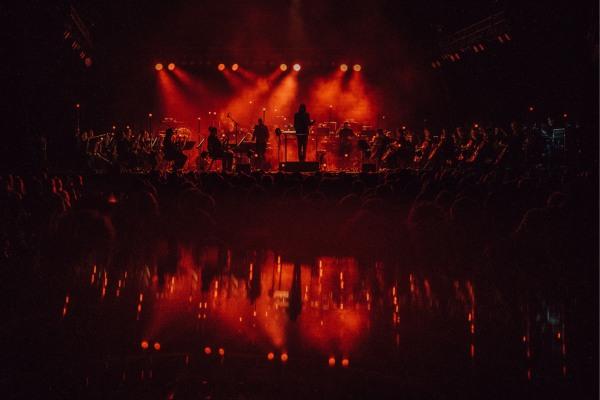There have been some surprising and unlikely Adelaide Symphony Orchestra collaborations with the musical mainstream over the years; Hilltop Hoods and The Avalanches immediately come to mind.
While I do not feel qualified to comment on the potential incongruity of those performances, I believe Sigur Rós's epic soundscapes are more fitting and agreeable to orchestral re-workings than most.A contrast to the reported audio dynamics and light spectacles of a Sigur Rós performance unadorned by an orchestra, their more dynamic and abrasive material has been left aside on this occasion (17 May at Adelaide's AEC Theatre) in order to accommodate a flow and integration of the orchestra that does not see the ensemble sitting out portions of the concert.
In fact, it is the band themselves that do this, all but leaving the stage (apart from pianist Kjarri) towards the end of each of the songs closing the two sets performed.
Furthermore, to describe these shows as the band being accompanied by a corresponding local orchestra is an understatement, as the instrumentation is so successfully integrated, it is difficult to differentiate between the band and the orchestral players.

Image © Michael Lockheart
In this context, the band are hidden in plain sight amidst the orchestra, virtually nondescript among the numerous instrumentalists all similarly dressed in black; although vocalist Jonsi does come across as somewhat of a featured soloist with his androgynous, choirboy vocals sometimes indistinguishable from the accompanying instrumentation.
These collaborative shows are best experienced with the view the performance is a symphony, with the opening song 'Blóðberg' from their orchestral album 'Atta' (which potentially spurred this orchestral reimagining of their back catalogue) setting the tone and acting as an introductory overture.
Aside from some basic lighting, visually it is a modest affair with no real movement onstage apart from conductor Robert Ames' smooth, flowing gestures leading the playing.
The darker, moody 'Ekki Múkk' reinforces the thought that the set is indeed like a progressing suite, with Jonsi bowing his guitar adding a soaring drone to the predominant acoustic instrumentation. The slight flickering stage lights appear like candles in a breeze as the song comes to a close.
There is a certain melancholy to 'Fljótavík', especially given Jonsi's otherworldly vocals in that sometimes you can almost hear something recognisable in there, but if there is a narrative, it is indecipherable.

Image © Michael Lockheart
By the time the band and ASO come to play 'Starálfur', perhaps their most recognisable song, it is evident Sigur Rós have found their niche and this is it. The starkest moment in the evening is during the brief vocal and acoustic guitar interplay prior to an uplifting orchestral swell.
With their 'Valtari' album represented by 'Dauðalogn' and then 'Varðeldur', this first half comes towards a close, the band leaving while the orchestra continues on for a time, the lights gradually dimming as Kjarri's piano refrain is played to end this first set.
Following the break, the music feels like it is continuing on from where the first set left off with a couple of untitled selections from '( )' aka The Bracket Album, the first of which paradoxically sounds like it is going to be the last and is a vehicle for Jonsi's best vocal performance with his back to the audience while playing keys.
The second of these untitled songs is underpinned by a piano melody while orchestration builds and builds, and then pulls back before building again by which time the orchestra saturates the 'band', only Jonsi's vocal and soaring bowed guitar maintaining the band's presence.

Image © Michael Lockheart
Later, 'Sé Lest' is a departure in style, lullaby-like and almost playful in execution with marching band horns evoking a sense of joy that raises the mood. This musical sea change continues with the measured, forward moving, driving beat of the penultimate song 'Hoppípolla'.
'Avalon' is an appropriate postlude, a pulsing bass, orchestral drone performed by the orchestra after the band leaves the stage, accompanied by revealing slow bursts of alternating yellow and orange lighting.
After a standing ovation, the audience awkwardly return to sitting wanting more and expectant of an encore that does not eventuate, not quite versed in the usual protocols following a classical recital.
More photos from the concert.






